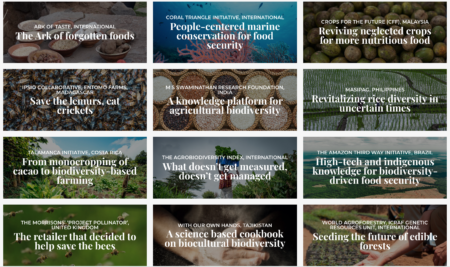From the desk of Landscape News comes a series of live interviews with experts examining the linkages between COVID-19 and climate change. On 13 May, Tony Simons, director general of World Agroforestry (ICRAF), will speak with Charlotte Lusty, head of programs and genebank platform coordinator at Crop Trust; Lava Kumar, virologist and head of germplasm health at the International Institute of Tropical Agriculture (IITA); and Vania Azevedo, genebank head at the International Crops Research Institute for the Semi-Arid Tropics (ICRISAT) about the relationship between COVID-19, genebanks and the conservation of seeds.
Register here.

